奇特有趣的见面礼大全及其英语表达(附多图)

FRIENDLY GESTURES

Giving dap
dap is a friendly gesture of greeting, agreement, or solidarity between two people that has become popular in western cultures, particularly since the 1970s, originating from African American communities. Giving dap typically involves handshaking (often, by hooking thumbs),
pound hugging, fist pounding, or chest- bumping The practice and term originated among black soldiers during the Vietnam War, as part of the Black Power movement and the term is attested since 1971.
Some people believe that “dap” is an acronym for “dignity and pride,” reflecting the adoption of the dap greeting by the black power movement. Others suggest that “dignity and pride” is merely what is sometimes called a "backronym" — an acronym thought up after a word already existed. "Dap" also might be a shortening of another word or an onomatopoeia — a word that imitates the noise produced by this type of greeting; some dap greetings create a sound much like “dap,” which is produced by pulling the slightly cupped hands of the participants against each other.

 Barack Obama bumping elbows with two
Barack Obama bumping elbows with two
General Services Administration workers in 2012
"The Elbow Bump" greeting
Elbow bump


 In this diagram, fist a and fist become
In this diagram, fist a and fist become
together and "bump".
A fist bump
Fist bump
A fist bump (also called power five, dap, fist pound, touch, or brofist) is a gesture similar in meaning to a handshake or high five. A fist bump can also be a symbol of giving respect. It can be followed by various other hand and body gestures and may be part of a dap greeting. It is commonly used in baseball and hockey as a form of celebration with teammates, and with opposition players at the end of a game. In cricket it is a common celebratory gesture between batting partners.
 Buck Showalter (left) engagesMatt Wieters in a pound hug
Buck Showalter (left) engagesMatt Wieters in a pound hug
Pound hug
The pound hug (also referred to as a pound shake, hip-hop hug, one-armed hug, dude hug, cootie hug, homie hug, shug, hetero hug, bro-grab,bro hug, brah hug, thug hug, man-hug, or a daps) is a stylized greeting, exclusively performed between two people, that consists of a combination of a handshake and one-armed hug.
Unlike the traditional hug, which symbolically and effectively removes interpersonal barriers and unites the two persons embracing, the pound hug—performed by keeping the right hand locked in handshake while the left arm wraps around the other's shoulder—interposes the obstacle of the two right arms to the joining of the two bodies. The origin of this hug is not clear.
Fist pump
 Andy Murray pumps his fist after beating Roger Federer.
Andy Murray pumps his fist after beating Roger Federer.
Fist pump
The fist pump is a celebratory gesture in which a fist is raised before the torso and subsequently drawn down and nearer to the body in a vigorous, swift motion. The fist pump is sometimes carried out in parts of the Western Hemisphere, Europe, and Japan (where it is known as guts pose) to denote enthusiasm, exuberance, or success and may be accompanied by a similarly energetic exclamation or vociferation. The gesture may be executed once or in a rapid series.
 Hand heart
Hand heart
Hand heart
 A tip o' the hat (US President CalvinCoolidge, 1924).
A tip o' the hat (US President CalvinCoolidge, 1924).
Hat tip
A hat tip is an act of tipping or (especially in British English) doffing one's hat as a cultural expression of recognition, respect, gratitude, greeting, or simple salutation and acknowledgement between two persons. In Western societies of the 19th and early 20th centuries, a hat tip was a common non-verbal greeting between friends or acquaintances while walking or meeting at a social gathering.
Typically, two men (female hat tipping was rare) would lift or tip their hats to each other, rather than exchange words of greeting. Where the ritual was used to emphasize social distance, the subordinate was obliged to make the more elaborate gesture, for example fully removing his hat while the superior merely touched his. The military hand salute is thought to have originated as a stylized hat tip; while the civilian may return a salute via a hat tip. In its modern use, the hat tip has been replaced by the nod as a manner of respect. If one man gives another the nod, he should return in kind with either the casual nod up or the formal nod down
gift of raising one 's hat
脱帽
 脱帽礼来源于冷兵器时代,
脱帽礼来源于冷兵器时代,
当时,作战都要戴头盔,
头盔多用铁制,十分笨重。
战士到了安全地带,首先是
把头盔摘下,以减轻沉重
的负担。这样脱帽就意味着
没有敌意,如到友人家,
为表示友好,也以脱盔示意·
这种习惯流传下来,
就是今天的脱帽礼。
 时至今日,行脱帽礼已经在美国很罕见了,部分的原因是社交礼仪已不那么严格,另有部分原因即人们也不怎么戴帽子了。然而在20世纪50年代,男人对女人脱帽行礼还是司空见惯的,不论在室内还是搭电梯,男人们都要脱帽。(在1949年,已知最早的电梯礼仪准则里这么说:不计其数的女人抱怨男人们在人群中行礼时总打到她们的头,因此男人们不要脱帽了。)
时至今日,行脱帽礼已经在美国很罕见了,部分的原因是社交礼仪已不那么严格,另有部分原因即人们也不怎么戴帽子了。然而在20世纪50年代,男人对女人脱帽行礼还是司空见惯的,不论在室内还是搭电梯,男人们都要脱帽。(在1949年,已知最早的电梯礼仪准则里这么说:不计其数的女人抱怨男人们在人群中行礼时总打到她们的头,因此男人们不要脱帽了。)


 with hat in hand,意为“对……膜拜,
with hat in hand,意为“对……膜拜,
言听计从,尽极承欢”;
I take my hat off to him.意为
“我对他表达仰慕之意”。



 A high five between two
A high five between two
U.S. Navy Sailors
The gesture probably originated in
American professional sports.
Picture of Drew Storen (right) and
Wilson Ramos of the Washington Nationals (2011).
High five
the high five is a hand gesture that occurs when two people simultaneously raise one hand each, about head-high, and push, slide, or slap the flat of their palm against the flat palm of the other person. The gesture is often preceded verbally by a phrase like "Give me five" or "High five." Its meaning varies with the context of use but can include as a greeting, congratulations or celebration
Air five
An air five is a variation where the hands of the participants never physically touch, needing only line of sight to make the gesture.It has an advantage for participants who are otherwise too far apart to achieve physical contact at the moment of the gesture. The participants may simply pretend to high five, or add an imitation sound of hand slapping. Also known as the wi-five, a mix of "wireless" and "high five" with a pun on wi-fi, a wireless computer technology.

Two women engaging in an air five.
 A U.S. airman and a Māori warrior exchange a hongi during a pōwhiriceremony
A U.S. airman and a Māori warrior exchange a hongi during a pōwhiriceremony
幻灯片28
Hongi
A hongi is a traditional Māori greeting in New Zealand. It is done by pressing one's nose and forehead (at the same time) to another person at an encounter. In the hongi, the ha (or breath of life), is exchanged and intermingled. The breath of life can also be interpreted as the sharing of both party's souls.Through the exchange of this physical greeting, one is no longer considered manuhiri (visitor) but rather tangata whenua, one of the people of the land. For the remainder of one's stay one is obliged to share in all the duties and responsibilities of the home people
 碰鼻礼:新西兰的原住民毛利人中还
碰鼻礼:新西兰的原住民毛利人中还
保留着一种古老的见面礼仪,即碰鼻礼。
毛利主人在初次见面时必须与客人
鼻尖对鼻尖连碰两三次,碰的次数越多、
时间越长,则说明客人越受他们尊敬。
幻灯片30
习大大和彭麻麻访问新西兰惠灵顿,当地政府为其举行欢迎仪式,就用了这一最高礼遇。
1


 The ILY is a common sign in
The ILY is a common sign in
Deaf culture meaning, "I Love You" (informal).
幻灯片33
ILY sign
The ILY is a sign from American Sign Language which, as a gesture, has moved into the mainstream. Seen primarily in the United States and otherAmericanized countries, the sign originated among deaf schoolchildren using American Sign Language to create a sign from a combination of the signs for the letters I, L and Y (I Love You)
kiss


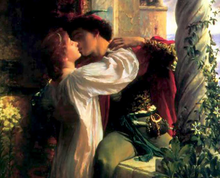
Romeo and Juliet in a painting by Sir Frank Dicksee.
Lovers kissing in the park
Elvis Presley kissing his
new bride Priscilla Wagner
on their wedding day, May 1,
1967, at the Aladdin Hotel
in Las Vegas, Nevada
The kiss of Judas
 "The Taking of Christ" by Caravaggio depicts Judas betrayingJesus with a kiss as a signal to arrest Jesus.
"The Taking of Christ" by Caravaggio depicts Judas betrayingJesus with a kiss as a signal to arrest Jesus.
 Jean-Honoré Fragonard
Jean-Honoré Fragonard
The Stolen Kiss

 Kiss with humor. Priest and
Kiss with humor. Priest and
lady of clubs.
Rijeka Carnival
in February 2008.
an kissing the ground after a long sea voyage (as part of a reenactment of the first landing of English settlers in Virginia in 1607)
 Black-tailed prairie dogs"kissing." Prairie dogs use a nuzzle of this variety to greet their relatives.[
Black-tailed prairie dogs"kissing." Prairie dogs use a nuzzle of this variety to greet their relatives.[

 Kissing the Blarney Stone
Kissing the Blarney Stone
Kiss on the crucifix in Christianity
 Denis Thatcher, husband of Margaret
Denis Thatcher, husband of Margaret
Thatcher, kissing the hand of
Nancy Reagan wife of US President in1988
hand-kissing
a gesture indicating courtesy, politeness, respect, admiration or even devotion by one person toward another.A hand-kiss is initiated by the person receiving the greeting by holding out their hand with the palm facing downward; or by the person giving the greeting, by extending a hand to grasp the recipient's hand. The person kissing bows towards the offered hand and (symbolically) touches the knuckles with their lips, while lightly holding the offered hand. However, the lips do not actually touch the hand in modern tradition. The gesture is short, lasting less than a second.
In Turkey, Malaysia, Indonesia, Brunei and the Philippines, hand-kissing is a common way to greet elder people of both genders, primarily the closest relatives (both parents, grandparents, and uncles or aunts) and teachers. Occasionally, after kissing the hand, the greeter will draw the hand to his own forehead.
吻手礼——欧洲如英国、法国、德国、波兰、沙特。
吻手礼源于古代维京人用手向其日耳曼君主递礼物的风俗,流行于欧美上层社会流行于欧美上流社会异性之间的一种最高层次的见面礼,是一种仅对贵族已婚妇女实施的礼节。吻手礼一般在室内举行,并且仅限于手腕以下部位,一般是指背。
这里注意,礼貌性的吻手礼并不是真的要亲吻到女士的手哦!
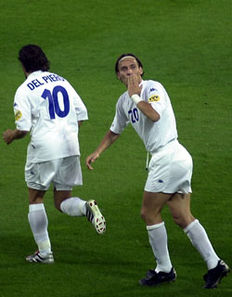
 Blowing a kiss.
Blowing a kiss.
行吻手礼时,男士行至女士面前距约80 厘米,首先立正欠身致敬,女士先将右手轻轻向左前方抬起约60 度时,男士以右手或双手轻轻抬起女士的右手,同时俯身弯腰以自己微闭的嘴唇象征性地轻触一下女士的手背或手指,要稳重、自然、利索,不发出“吮”的声音,不留“遗迹” 。行吻手礼仅限于室内,而且主要是男士向已婚女士表示的一种敬意。在法国、波兰和拉美的一些国家里,向已婚女士行吻手礼,是男士有教养的表现。因此,在涉外场合,如果外方男士向中方女士行吻手礼时,应礼貌地予以接受。
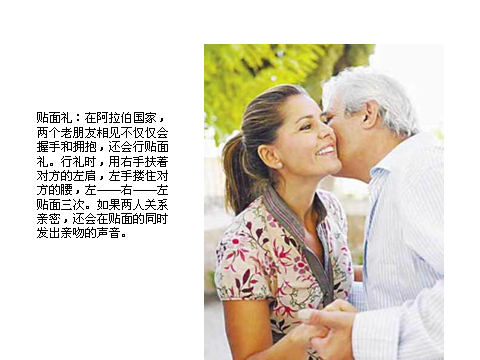
 This woodcut of the practice of kissing the Pope's toe is fromPassionary of the Christ and Antichrist by Lucas Cranach the Elder.
This woodcut of the practice of kissing the Pope's toe is fromPassionary of the Christ and Antichrist by Lucas Cranach the Elder.


 幻灯片47
幻灯片47
“吻脚礼”是一种自发的、非制度化的仪式,早期寓意臣服,“谦卑地屈膝”、“跪在统治者面前”。跟这些一样,它也由东方国家传来。古埃及人是趴在主人面前的地上,闻嗅或亲吻土地。波斯人有个传统,谁接近国王,谁就必须边祈祷边趴在他面前。必须像面对神像一样以脸触地。有权享受这种跪拜礼的不仅仅是国王。它是高高在上的贵族们向他们的臣仆要求的一种自贬形式。即表示一种拜服的态度,后成为古罗马教徒中尊享的礼仪,现已不再流行。现在存在的吻脚礼多取尊重、尊敬之意,如尼泊尔人在重大节日要行传统吻脚礼。

从吻脚到吻脸--文明的进步
Air kiss
The air kiss is a ritual or social gesture whose meaning is basically the same as that of many forms of kissing. The air kiss is a pretence of kissing: the lips are pursed as if kissing, but without actually touching the other person's body. Sometimes, the air kiss includes touching cheek-to-cheek. Also, the gesture may be accompanied by the mwah sound
幻灯片51
A symbolic kiss is frequent in Western cultures. A kiss can be "blown" to another by kissing the fingertips and then blowing the fingertips, pointing them in the direction of the recipient. This is used to convey affection, usually when parting or when the partners are physically distant but can view each other. Blown kisses are also used when a person wishes to convey affection to a large crowd or audience. The term flying kiss is used in India to describe a blown kiss
.


 L'Amour et Psyche,
L'Amour et Psyche,
enfants" Amorcheek
kissing Psyche.
Oil on canvas by
William-Adolphe
Bouguereau. 1890
Judas cheek kissing Christ. Oil on canvas by Caravaggio, 1602
A father kissing the cheek of his daughter
幻灯片53
Cheek kissing
a ritual or social kissing gesture to indicate friendship, perform a greeting, to confer congratulations, to comfort someone, to show respect, or to indicate sexual or romantic interest. Double Cheek Kissing in the Italian families is a ritual of "I have your back and you have mine", it's the holy Grail of ultimate loyalty. Then when approaching the head of the family a Double kissed on the cheek starting with the right side, and then it was customed to kiss the hand and the ring. Starting the double kiss on the left was considered the Judas Kiss.


A Mohiniattam dancer
making a Namaste
gesture
 Pressing hands together with
Pressing hands together with
a smile to greet Namaste –
a common cultural practice
in India.
Surya Namaskara,
salutations to Surya.
Namaste
a respectful form of greeting in Hindu custom, found on the Indian Subcontinent mainly in India and Nepal and among the Indian diaspora. It is used both for salutation and valediction. Namaste is usually spoken with a slight bow and hands pressed together, palms touching and fingers pointing upwards, thumbs close to the chest. This gesture is called Añjali Mudrā or Pranamasana.In Hinduism it means "I bow to the divine in you". The greeting may also be spoken without the gesture or the gesture performed wordlessly, carrying the same meaning.
合十礼(salute with putting palms together)——印度泰国,缅甸,老挝佛教国家

合十礼,又称“合掌礼”,原是印度古国的文化礼仪之一,后为各国佛教徒沿用为日常普通礼节。行礼时,双掌合于胸前,十指并拢,以示虔诚和尊敬。这种礼仪多见于信奉佛教的国家,比如说泰国。泰国人见面时往往低头问候,并将双手合十于胸前。另外,泰国认为头部是神圣的,不能随意摸别人的头。
双掌举得越高,表示尊敬程度越深。平民百姓见国王双手要举过头顶,小辈见长辈要双手举至前额,两掌相合后需举至脸部。平辈相见举到鼻子以下。长辈对小辈还礼举到胸前,手部不应高过前胸。地位较低或年纪较轻者应先合十致意。

跪合十:各国佛教徒拜佛祖或高僧时要行的一种礼节。蹲合十:某些国家的人在拜见父母或师长时的一种礼节。站合十:某些国家的平民之间、平级官员之间相拜,或公务人员拜见长官时常用的一种礼节。



GESYURES FOR RESPECT

 Different degrees of bowing and prostration,
Different degrees of bowing and prostration,
here drawn fromEastern Orthodox
religious liturgical use
Students wearing suits, hakama and a kimono bow to the president of the school and then to the audience at the 2015 Waseda Universitygraduation ceremony in Japan.
 Steven Gerrard performing a wai
Steven Gerrard performing a wai
BOW

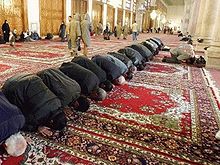 uslim practitioners performing Sajdah or Sujud.
uslim practitioners performing Sajdah or Sujud.
 Bowing
Bowing
Judo practitioner (right) performs a bow while seated in seiza.
Bowing (also called stooping)
the act of lowering the torso and head as a social gesture in direction to another person or symbol. It is most prominent in Asian cultures but it is also typical of nobility and aristocracy in many countries and distinctively in Europe. It is also used in religious contexts, as a form of worship or veneration. Sometimes the gesture may be limited to lowering the head such as in Indonesia, and in many cultures several degrees of the lowness of the bow are distinguished and regarded as appropriate for different circumstances. It is especially prominent
in India, Thailand,China, Korea, Taiwan, Japan, and Vietnam where it may be executed standing or kneeling. Some bows are performed equally by two or more people while others are unequal - the person bowed to either does not bow in return or performs a less low bow in response. A nod of the head may be regarded as the minimal form of bow; forms of kneeling, genuflection, or prostration which involves the hands or whole body touching the ground, are the next levels of gesture.
鞠躬礼——朝韩、日本
鞠躬礼起源于中国,鞠躬主要表达“弯身行礼,以示恭敬”的意思。如今在朝鲜、日本运用最普遍。日本是一个极其注重礼节的国家,见面时一般都要互相问候,脱帽鞠躬,眼睛向下,表示诚恳的态度。日本妇女温柔体贴,每天鞠躬无数次,对男子亦十分尊重。除了日本之外,朝鲜人见面也行鞠躬礼
各国见面礼仪




An indicator of respect
Japan


对日本人来说,鞠躬的程度表达不同的意思。如:,弯15度左右,表示致谢;弯30度左右,表示诚恳和歉意;弯90度左右,表示忏悔、改过和谢罪。

鞠躬对韩国和朝鲜人来说也很讲究。我们可以经常看到,韩国和朝鲜妇女在会谈、宴会或作客时,一手提裙,一手下垂鞠躬,告别时面对客人慢慢退去,表示 一种诚恳和敬意。行鞠躬礼掌握的要领是:
A、 脖子不可伸得太长,不可挺出下颏;
B、 耳和肩在同一高度:
C、 保持正确的站立姿势,两腿并拢,双目注视对方的胸部,随着身体向下弯曲,双手逐渐向下,
 幻灯片68
幻灯片68
行鞠躬礼时面对客人,并拢双脚,视线由对方脸上落至自己的脚前1.5米处(15度礼)或脚前1米处(30度礼)或脚前1.4米处(60度礼)。男性双手放在身体两侧,女性双手合起放在身体前面。
鞠躬时必须伸直腰、脚跟靠拢、双脚尖处微微分开,目视对方。然后将伸直的腰背,由腰开始的上身向前弯曲。
鞠躬时,弯腰速度适中,之后抬头直腰,动作可慢慢做,这样令人感觉很舒服。
 幻灯片69
幻灯片69
鞠躬时要注意如是戴着帽子时,应将帽子摘下,因为戴帽子鞠躬既不礼貌,也容易滑落,使自己处于尴尬境地。鞠躬时目光应向下看,表示一种谦恭的态度,不要一面鞠躬,一面试图翻起眼睛看对方。

Presenting flowers to The Queen outside Brisbane City Hall in March 1954
Curtsey
curtsey (also spelled curtsy or even incorrectly courtsey) is a traditional gesture of greeting, in which a girl or woman bends her knees while bowing her head. It is the female equivalent of male bowing in Western cultures. Miss Manners characterizes its knee bend as deriving from a "traditional gesture of an inferior to a superior." The word "curtsy" is a phonological change from "courtesy" known in linguistics as syncope.

 Francis of Assisi in genuflection (painting by Francisco Zurbarán)
Francis of Assisi in genuflection (painting by Francisco Zurbarán)
1909 drawing of Hermod genuflecting before Hela, from Norse religion
Capt. James A. Symonds, Commanding Officer
of the USS Ronald Reagan, genuflects while
presenting the former American President's
casket flag to former First Lady Nancy Reagan
Genuflection
or genuflexion), bending at least one knee to the ground, was from early times a gesture of deep respect for a superior. In 328 BC,Alexander the Great introduced into his court-etiquette some form of genuflection already in use in Persia.In the Byzantine Empire even senators were required to genuflect to the emperor,In medieval Europe, one demonstrated respect for a king or noble by going down on one knee. often remaining there until told to rise. It is traditionally often performed in western cultures by a male making a proposal of marriage. Today, the gesture is common in the Christian religious practices of the Anglican Church, Lutheran Church,Roman Catholic Church, and Western Rite Orthodox Church.
 Kowtowing in China
Kowtowing in China
幻灯片77
Kowtow
Kowtow, which is borrowed from kau tau in Cantonese (koutou in Mandarin Chinese), is the act of deep respect shown by prostration, that is,kneeling and bowing so low as to have one's head touching the ground. An alternative Chinese term is ketou; however, the meaning is somewhat altered: kou has the general meaning of knock, whereas ke has the general meaning of "touch upon (a surface)", tou meaning head.
In East Asian culture, the kowtow is the highest sign of reverence. It was widely used to show reverence for one's elders, superiors, and especially the Emperor, as well as for religious and cultural objects of worship. In modern times, usage of the kowtow has become reduced
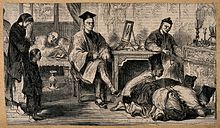

Polish recruits are sworn in in 2007
German Reichswehrsoldiers
swear theHitler oath in 1934

Elisabeth Kopp's oath of office
after her election at the Swiss
Federal Council in 1984,
Swiss Guard recruit being sworn in inVatican City in 2008
幻灯片80
Schwurhand
The Schwurhand (German pronunciation: is a heraldic charge depicting the hand gesture that is used in Germanic Europe and neighboring countries, when swearing an oath in court, in office or in swearing-in. The right hand is raised, with the index finger and middle finger extended upwards; the last two digits are curled downwards against the palm. The thumb is shown slightly curled or raised.
幻灯片81
Salute

Scouting leader and a new
Scout exchange salutes
Polish style salute,
using two fingers
 The civilian Secretary General of NATO Joseph Luns tips his hat at a troop review in 1983, in lieu of a military salute. This (the full gesture is shown here) was by then becoming old-fashioned as a general social greeting, but had once been normal.
The civilian Secretary General of NATO Joseph Luns tips his hat at a troop review in 1983, in lieu of a military salute. This (the full gesture is shown here) was by then becoming old-fashioned as a general social greeting, but had once been normal.
Salute

 Rustic Civility by William Collins showing a child "tugging his forelock" as a person of higher standing passes on horseback (only visible by the shadow)
Rustic Civility by William Collins showing a child "tugging his forelock" as a person of higher standing passes on horseback (only visible by the shadow)
幻灯片83
Salute
Roman salute
The Oath of the Horatii,
byJacques-Louis David
 幻灯片85
幻灯片85
Roman salute
The Roman salute is a gesture in which the arm is held out forward straight, with palm down, and fingers touching. In some versions, the arm is raised upward at an angle; in others, it is held out parallel to the ground. In contemporary times, the former is widely considered a symbol of fascism that is commonly perceived to be based on a custom in ancient Rome.However, no Roman text gives this description and the Roman works of art that display salutational gestures bear little resemblance to the modern Roman salute.
Nazi salute




Nazi salute
the Nazi salute or Hitler salute is a gesture that was used as a greeting in Nazi Germany. The salute is performed by extending the right arm in the air with a straightened hand. Usually, the person offering the salute would say "Heil Hitler!" (Hail Hitler!), "Heil, mein Führer!" (Hail, my leader!), or "Sieg Heil!" (Hail victory!). It was adopted in the 1930s by the Nazi Party to signal obedience to the party's leader – Adolf Hitler – and to glorify the German nation (and later the German war effort). The salute was mandatory for civilians, but was mostly optional for military personnel who retained the traditional military salute until shortly after the failed assassination attempt on Hitler in 1944.
Scout sign and salute


Ukrainian Girl Scout from
Plast making the Scout Sign
A christmas cookie as
three-finger salute.
the three-finger salute is used by members of Scout and Guide organizations around the world when greeting other Scouts and in respect of a national flag at ceremonies. In most situations, the salute is made with the right hand, palm face out, the thumb holding down the little finger, and with the fingertips on the brow of the head. There are some variations of the salute between national Scouting organizations and also within some programme sections.
幻灯片91
Military Salute
In military traditions of various times and places, there have been numerous methods of performing salutes, using hand gestures, cannon or rifle shots, hoisting of flags, removal of headgear, or other means of showing respect or deference.
Military Salute
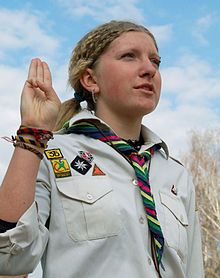
 Israeli style salute at IDF ceremony for the newly appointed Commander in Chief of Israeli Navy, Brig. General Ram Rotenberg
Israeli style salute at IDF ceremony for the newly appointed Commander in Chief of Israeli Navy, Brig. General Ram Rotenberg
A captain of the French Navysalutes by
holding the back of his sabre to his face
during the ceremonies of the 14th of
July in Toulon.
A cannon on a naval
vessel's deck fired
during the arrival
of a dignitary.
举手注目礼:举手注目礼是专属
于军人的礼节,军人行军礼时举右手,
手指并拢,指尖触帽檐,两眼注视对方,直到对方答礼才可放下手。遇到长者或者长官时,军人必须行军礼。
幻灯片94
Salute
A U.S. Navy officer performs
a military hand salute.
Albanian soldiers performing the Zogist salute


 Pakistan army soldiers saluting
Pakistan army soldiers saluting
Zogist salute


Zogist salute
the Zogist salute or the nationalist Albanian salute, is a military salute of Albania since used by civilians in other countries.The salute is a gesture whereby the right hand is placed over the heart, with the palm facing downwards.
Raised fist



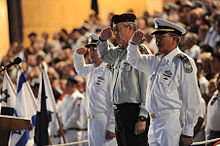 Painted symbol
Painted symbol
of the Power Fist
Semih Erden at the2010 FIBA
World Championship
Raised fist


Hugo Chávez in Brazil in 2003.
Peace movement
Raised fist
The raised fist (also known as the clenched fist) is a symbol of solidarity and support. It is also used as a salute to express unity, strength, defiance, or resistance. The salute dates back to ancient Assyria as a symbol of resistance in the face of violence.
拥抱礼——欧美
拥抱礼行礼时,通常是两人相对而立,各自右臂偏上,左臂偏下,右手环抚于对方的左后肩,左手环抚于对方的右后腰,根据身体倾斜左右左的顺序(顺序很重要哦,如果不一致,就尴尬了)。
幻灯片101
拥抱和亲吻一样是通过身体的某一部分的接触来表示尊敬和亲热。拥抱可以理解为缩短了距离的握手,或者是胸部的亲吻。拥抱的标准方式:两人相距20 厘米相对而立,各自抬起右臂,将右手扶着对方的左后肩,左手扶着对方的右后腰,双方的头部及上身向左前方相互拥抱,礼节性的拥抱到此结束。但为了表达更为亲密的感情在向左侧拥抱之后,头部及上身向右前方拥抱,最后再次向左前方拥抱,才算完毕,男女之间则抱肩膀,与此同时亲面颊的方式是左右左交替。双方身体不宜贴得太紧,拥抱时间也较短便不能用嘴去亲对方的面颊。




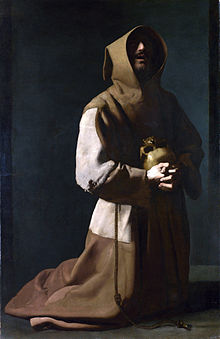

 唐迪
唐迪
 2017-11-07
2017-11-07
 7448
7448















 with hat in hand
with hat in hand



























































































